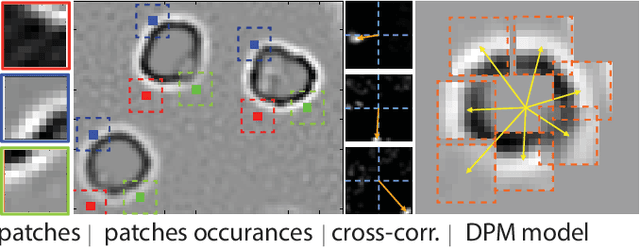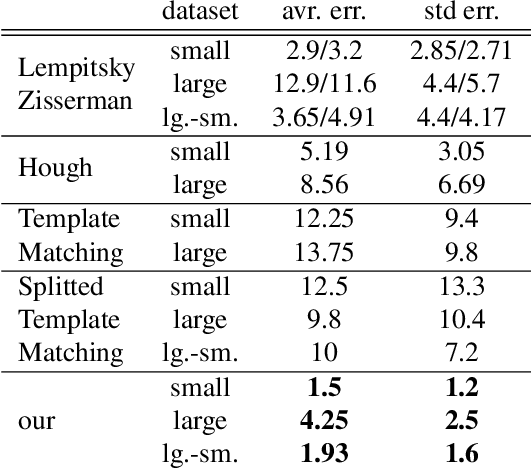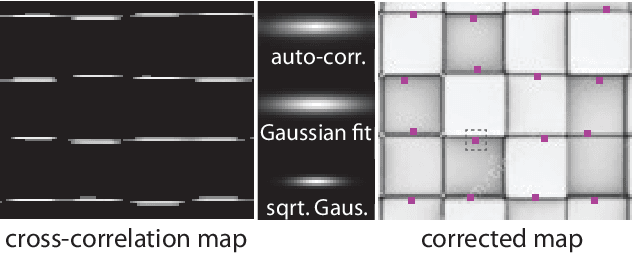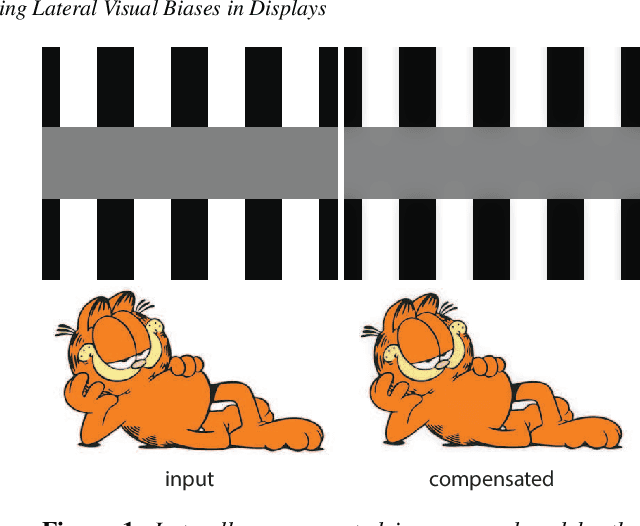Inbar Huberman
Detecting Repeating Objects using Patch Correlation Analysis
Apr 11, 2019



Abstract:In this paper we describe a new method for detecting and counting a repeating object in an image. While the method relies on a fairly sophisticated deformable part model, unlike existing techniques it estimates the model parameters in an unsupervised fashion thus alleviating the need for a user-annotated training data and avoiding the associated specificity. This automatic fitting process is carried out by exploiting the recurrence of small image patches associated with the repeating object and analyzing their spatial correlation. The analysis allows us to reject outlier patches, recover the visual and shape parameters of the part model, and detect the object instances efficiently. In order to achieve a practical system which is able to cope with diverse images, we describe a simple and intuitive active-learning procedure that updates the object classification by querying the user on very few carefully chosen marginal classifications. Evaluation of the new method against the state-of-the-art techniques demonstrates its ability to achieve higher accuracy through a better user experience.
Reducing Lateral Visual Biases in Displays
Apr 11, 2019



Abstract:The human visual system is composed of multiple physiological components that apply multiple mechanisms in order to cope with the rich visual content it encounters. The complexity of this system leads to non-trivial relations between what we see and what we perceive, and in particular, between the raw intensities of an image that we display and the ones we perceive where various visual biases and illusions are introduced. In this paper we describe a method for reducing a large class of biases related to the lateral inhibition mechanism in the human retina where neurons suppress the activity of neighboring receptors. Among these biases are the well-known Mach bands and halos that appear around smooth and sharp image gradients as well as the appearance of false contrasts between identical regions. The new method removes these visual biases by computing an image that contains counter biases such that when this laterally-compensated image is viewed on a display, the inserted biases cancel the ones created in the retina.
 Add to Chrome
Add to Chrome Add to Firefox
Add to Firefox Add to Edge
Add to Edge